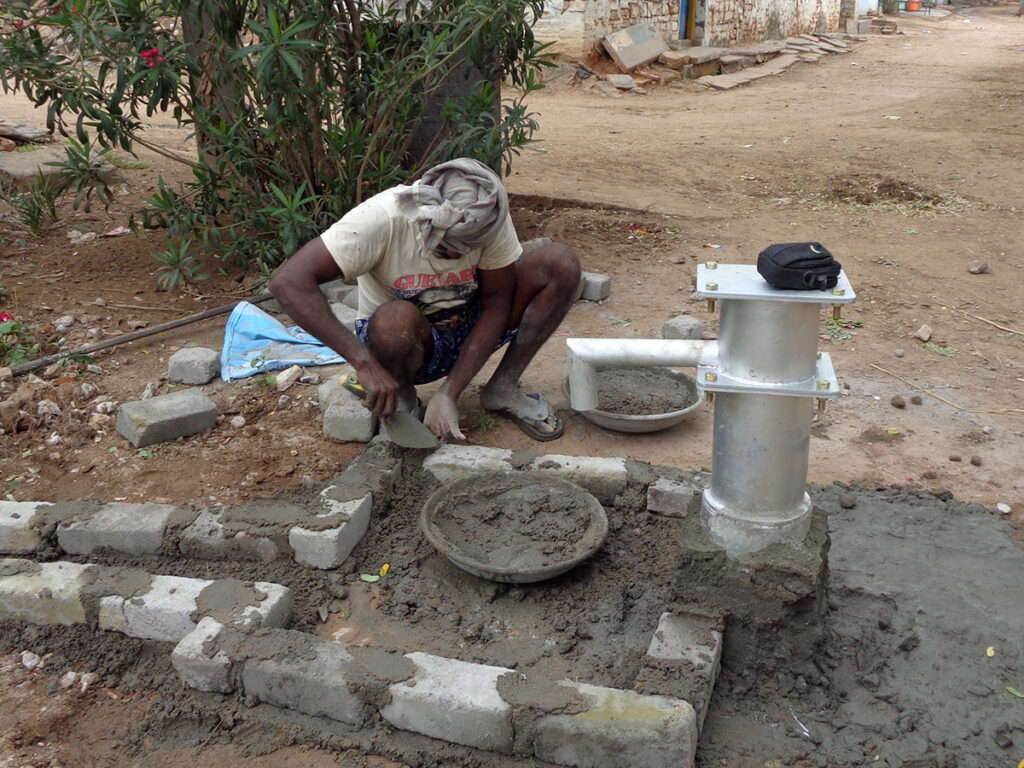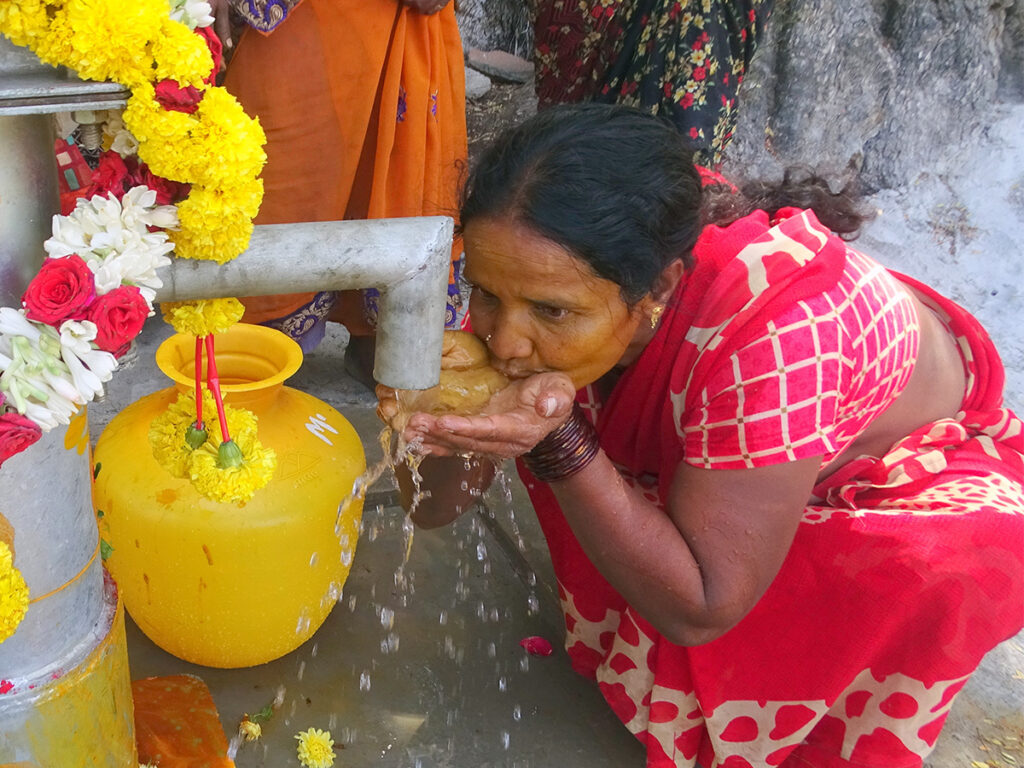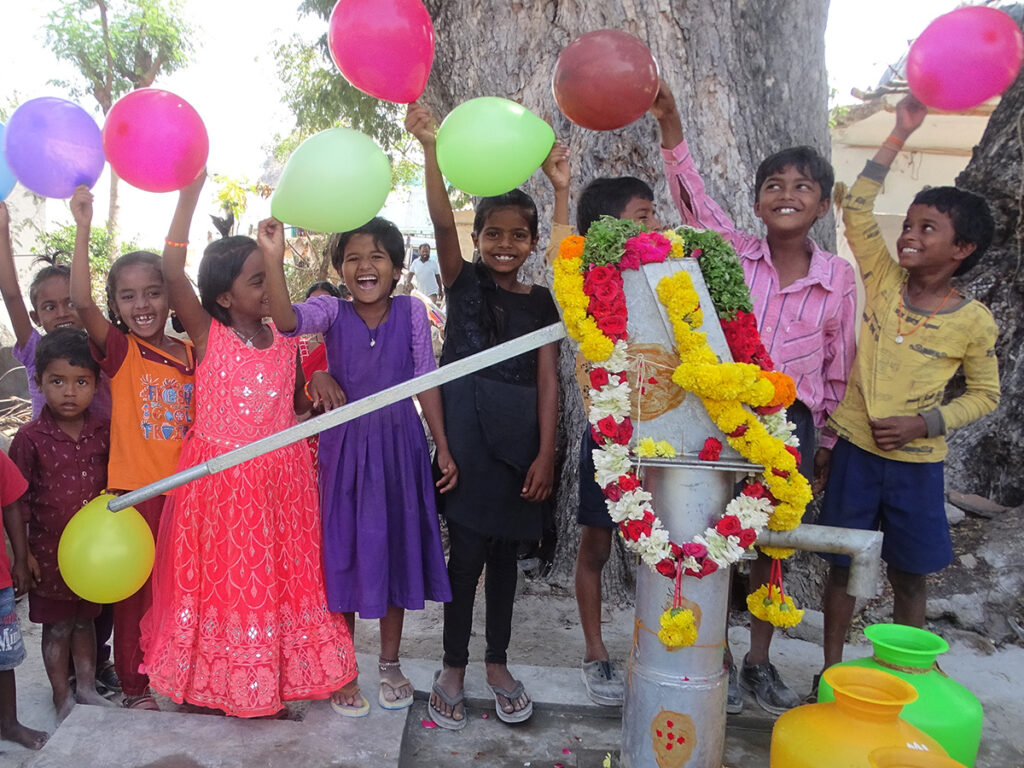Drilling for water
Mountainous regions in India face serious problems when it comes to access to clean drinking water. Even if a water point is available, the supply to these areas is often irregular and unreliable. These areas are difficult to access, making installing additional water networks difficult. Constructing borewells is therefore an effective solution for many. Let’s find out how this works.

Step 1: locating the right spot
Extensive research determines the best location before a borewell is installed. In mountainous areas, this is often a challenge due to the complex geological structure. That is why a certified geologist and their team analyze the area so that the best possible location for the well is chosen.
In addition to a proven underground water supply, other factors also play a role. Such as accessibility for transport for the building materials and the best location for the community using the water point. The closer to the village the better – but not too close to factors that could affect the water, such as latrines, animal stables or waste processing areas.
Step 2: Construction
To drill the wells, we work with renowned construction companies with plenty of experience. They sometimes drill more than 150 meters deep to reach the water. The drilled hole is reinforced using PVC pipes. These ensure that the drilled access to the water remains intact and does not become silted up by moving earth or soil. These pipes also protect the water against contamination. All this ensures that the borewell can be used by the surrounding community for a long time.


Step 3: Installing the platform and hardware
After the drilling process is finalized, the whole project is carefully finished. A hand pump is placed over the drilled hole, water filters are installed, and a platform is placed around the water source. This will be made of brick and cement – as sturdy as possible, to support daily use by many residents. The platform ensures good drainage and reinforcement in the event of possible landslides, which regularly occur in mountainous areas. Finally, residents of the village receive training that helps them properly maintain the pump and guarantee the quality of the water.
The video below provides a full visual of this entire process:
What’s the best solution?
Installing borewells is a quick and effective way to make a big difference in the lives of many people. In India, millions of people suffer from acute water shortage. This makes collecting water a daily task for many, which can be very dangerous in several ways. Because borewells can be installed relatively quickly in remote areas, we can immediately make a big difference in the lives of many.
This can be seen by some as a somewhat ‘old-fashioned’ solution, only solving a structural problem for a limited time. If the water reservoir in the ground dries out, or the pump is damaged, many people immediately lose access to clean drinking water. Maintenance and preliminary research are therefore essential. Other solutions can sometimes be safer and more future-proof, but also more expensive and technically more complicated or not possible in a specific region. That is why we choose the best solution for each project.


More than just water
With our project in India we provide more than 5,000 people with access to clean drinking water, right on their doorstep. The time they previously spent fetching water from remote sources can now be invested in their future. It allows them to go to school, or build a career.
That is why we like to say that a tap doesn’t just provide you with access to water, but also with more time. Time to make something out of life. And that is very important for these people who live so remotely. Who knows, among all the cheerful children in the photos we have received, there may be one who can now pay more attention to school, and in a few years will become a brilliant engineer who will ensure that their community never has to go without clean water again. How great would that be?
BOREWELLS IN INDIA
In cooperation with our local partner SPREAWS we will drill wells for 10 villages in the Kadapa District. These villages are located in rural and mountainous areas whose residents face significant socio-economic challenges.
Before installing the borehole, an underground water source is sought, often at a depth of about 150 meters. The quality of the water is extensively checked and ultimately all the hard work results in a platform with a hand pump, where residents can get clean water.
You might want to read these updates too:
Visiting Uganda
In October 2023 we traveled to the area around Fort Portal in Uganda with a group of ambassadors. There we were able to see the results of the hard work of local entrepreneurs with our own eyes. We…
Read moreWASH & Learn update May 2023
Our WASH & Learn project in Uganda should be completed by the end of this year. Time to check whether we are on schedule.
Read more